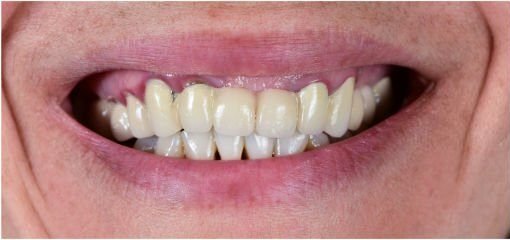Full-Mouth Rehabilitation


Full-Mouth rehabilitation is meant to revive the natural smile of the patient. At the dental clinic in Lahore, Sherwani Dental Associates; our expert Implantologists and maxillofacial surgeons are keen to assist the patient in getting a beautiful appearance and help them reach the optimal working condition or oral cavity.
When multiple treatments are combined together to restore the original number and quality of teeth, then it is considered as Full-Mouth Rehabilitation. During this, all the teeth in the upper and lower jaw are restored, and as a result, the whole mouth is rehabilitated to actual mastication forces.
With the help of Full-Mouth Rehabilitation, the natural smile of the patient is restored as well as the patient is able to eat properly. The forces of mastication are restored to the optimum and the patient is able to eat confidently once again
- First and most important is a proper diagnosis & treatment plan. Having modern digital radiography at the dentist’s disposal becomes imperative to delivering a precise dental diagnosis. A panoramic x-ray will show if there is any infection inside the bone that may require root canal therapy, or if the bone loss is progressive and the tooth cannot be saved. Consultation with Dr. Shariq will reveal if the gums are healthy or require periodontal treatment before starting any restorative work. Untreated periodontal disease will jeopardize the results of any dental work. After the health of the gums and jawbone is evaluated Dr. Shariq will create a comprehensive treatment plan to replace all missing teeth, remove all decay, restore teeth, and establish proper teeth bite.
- The next step in full mouth reconstruction is treatment. After our associate dentist completes the periodontal treatment, Dr. Shariq would perform all needed oral surgery procedures, extractions, bone grafts, and sinus lifts. In some instances when the jawbone is not compromised immediate dental implants are placed during the extraction visit. However, if it is not the case, healing is required before implant placement. After the dental implants achieve osseointegration (when the implant integrates with the bone) the patient is then treated by a restorative dentist.
- Dental implants, implant crowns, and implant bridges to restore missing teeth
- Dental implants and implant-supported dentures, all-on-4 or all-on-8 to restore edentulous mouth
- Dental crowns and veneers provide added strength to teeth weakened by decay or fractures
- Ceramic onlays to restore proper occlusion and teeth bite
- Gum grafting and bone grafting procedures to augment areas where gum or bone is deficient
- Dental deep cleaning and osseous surgery treatments for moderate to severe gum disease.




What is the difference between full mouth reconstruction and a smile makeover?
What are full mouth reconstruction steps?
- First and most important is a proper diagnosis & treatment plan. Having modern digital radiography at the dentist’s disposal becomes imperative to delivering a precise dental diagnosis. A panoramic x-ray will show if there is any infection inside the bone that may require root canal therapy, or if the bone loss is progressive and the tooth cannot be saved. Consultation with Dr. Shariq will reveal if the gums are healthy or require periodontal treatment before starting any restorative work. Untreated periodontal disease will jeopardize the results of any dental work. After the health of the gums and jawbone is evaluated Dr. Shariq will create a comprehensive treatment plan to replace all missing teeth, remove all decay, restore teeth, and establish proper teeth bite.
- The next step in full mouth reconstruction is treatment. After our associate dentist completes the periodontal treatment, Dr. Shariq would perform all needed oral surgery procedures, extractions, bone grafts, and sinus lifts. In some instances when the jawbone is not compromised immediate dental implants are placed during the extraction visit. However, if it is not the case, healing is required before implant placement. After the dental implants achieve osseointegration (when the implant integrates with the bone) the patient is then treated by a restorative dentist.
